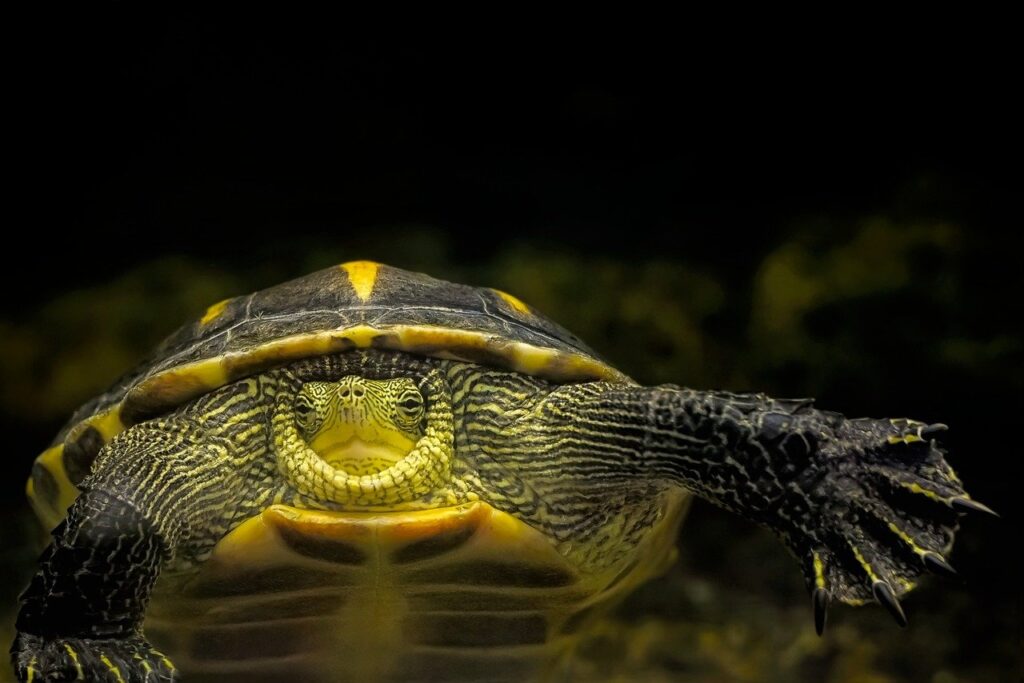Have you ever wondered about the astonishing longevity of snapping turtles? Well, it turns out that these remarkable reptiles can live quite a long time! In fact, snapping turtles have been known to live up to a staggering 100 years or more. That’s right, these ancient creatures have proven themselves to be true survivors, having roamed the Earth long before the dinosaurs. So, if you come across a snapping turtle basking in the sun, remember that you are in the presence of a living fossil with an extraordinary lifespan.
Life Expectancy of a Snapping Turtle
Snapping turtles, scientifically known as Chelydra serpentina, are fascinating creatures that can live for a surprisingly long time. The average lifespan of a snapping turtle in the wild is estimated to be around 30 to 40 years, but they have been known to live well into their 50s and even 60s. To understand the factors that affect the lifespan of these remarkable reptiles, it is important to consider various aspects of their life, such as their habitat, health, predators, growth, and human interaction.
Factors Affecting Lifespan
Several key factors influence the overall lifespan of snapping turtles. One of the primary factors is their habitat and environmental conditions. Snapping turtles are primarily found in freshwater environments, such as ponds, lakes, rivers, and swamps. The availability of clean water, suitable nesting sites, and an abundance of prey directly impact their survival and longevity.
Furthermore, the health and disease resistance of snapping turtles play a crucial role in determining their lifespan. Common health issues, such as respiratory infections, shell injuries, and parasites, can affect their overall well-being and potentially shorten their lifespan. Additionally, man-made pollution, including water pollution and habitat destruction, has a significant impact on their health and vitality, often leading to a decrease in their average lifespan.
Habitat and Environmental Conditions
Snapping turtles are highly adaptable creatures capable of thriving in various habitats. They prefer shallow water bodies with muddy bottoms, as these provide ample opportunities for feeding, basking, and laying eggs. The availability of suitable basking sites, such as logs or rocks, is also important for their thermoregulation and overall health. Adequate vegetation and submerged aquatic plants contribute to a diverse and balanced ecosystem, which ultimately benefits the longevity of snapping turtles.
Maintaining suitable environmental conditions is crucial for the survival and well-being of snapping turtles. Changes in water quality, temperature fluctuations, and the introduction of non-native species can disrupt the delicate balance of their ecosystem. Human activities, such as pollution, urbanization, and habitat degradation, pose significant threats to the habitat of these turtles, potentially reducing their lifespan and overall population numbers.
Health and Disease
As with any living organism, snapping turtles are susceptible to a range of health issues that can impact their lifespan. Recognizing and addressing these common health issues are vital for preserving their population and ensuring their longevity.
Common Health Issues
Respiratory infections, often caused by bacteria or parasites, are a common health concern among snapping turtles. These infections can lead to respiratory distress, loss of appetite, and reduced overall fitness. Shell injuries, such as cracks or fractures, can also occur due to interactions with predators, vehicles, or human activities. These injuries can expose the turtle to infections and other complications, potentially shortening their lifespan.
Furthermore, parasitic infestations, including leeches, intestinal worms, and external parasites, can affect the health of snapping turtles. These parasites can cause anemia, weight loss, and a weakened immune system, making the turtles more susceptible to other diseases and reducing their overall lifespan.
Impact of Man-made Pollution
Man-made pollution, such as water pollution and habitat destruction, poses significant risks to the health and survival of snapping turtles. Chemical pollutants, including pesticides, heavy metals, and plastic debris, can contaminate their habitats and lead to poisoning or other health complications. Additionally, the destruction of wetlands and nesting grounds deprives snapping turtles of suitable environments for reproduction, directly impacting their population and lifespan.
It is crucial to raise awareness about the environmental impact of pollution and take proactive measures to conserve their habitats. By reducing pollution and implementing sustainable practices, we can help promote the health and longevity of snapping turtles, ensuring their presence in our ecosystems for generations to come.

Predators and Threats
While snapping turtles have a formidable reputation, they are not without their share of natural predators and threats. Understanding these factors is essential for grasping their lifespan and survival rates in the wild.
Natural Predators
Juvenile snapping turtles are particularly vulnerable to predation, as they are smaller in size and more easily targeted by predators. Common natural predators of snapping turtles include raccoons, foxes, large birds, and even other turtles. These predators primarily target nests and young hatchlings, significantly impacting the survival and potential lifespan of snapping turtles.
Human Intervention
Human activities and intervention can also pose substantial threats to snapping turtles. The collection of eggs or adult turtles for food or the pet trade can have detrimental effects on their populations. Furthermore, vehicular collisions during nesting season and habitat destruction due to urbanization directly reduce the lifespan and populations of snapping turtles.
It is essential to reduce human intervention and provide protected areas for snapping turtles to thrive. By respecting their natural habitats and minimizing disturbances, we can help maintain the delicate balance between human activities and the preservation of these remarkable creatures.
Growth and Maturity
Snapping turtles undergo several stages of growth and development, each playing a crucial role in their overall lifespan and reproductive success.
Hatchling Stage
After an incubation period of approximately 50 to 90 days, snapping turtle eggs hatch, giving rise to small, vulnerable hatchlings. During this early stage, the hatchlings must fend for themselves, facing various threats and challenges. The survival rate of hatchlings is relatively low, with predators, harsh environmental conditions, and limited resources posing significant risks. Those that manage to evade predation and secure sources of food and shelter have a better chance of reaching adulthood and contributing to the overall population of snapping turtles.
Juvenile Growth
As the hatchlings develop into juveniles, they enter a growth phase characterized by rapid development and increased mobility. During this stage, snapping turtles actively feed on a wide range of prey, gradually growing in size and strength. The quality and availability of food sources directly influence their growth and overall health, ultimately affecting their longevity. At this stage, a combination of suitable habitat conditions and ample food resources can provide the foundation for a long and healthy life.
Reproduction and Maturity
Snapping turtles typically reach sexual maturity between 9 and 13 years of age, depending on various factors such as habitat quality, available resources, and population density. Mating takes place during the spring and early summer, as adult turtles seek out suitable nesting sites. Females lay their eggs in sandy or gravelly soils away from the water, carefully covering them to protect them from predators and harsh environmental conditions.
The reproductive success and continued growth of snapping turtles rely on the availability of suitable nesting sites and the presence of clean, unpolluted water bodies for both adults and juveniles. A healthy population of mature individuals contributes to the overall species diversity and longevity.

Longevity Records and Studies
Observing and documenting the lifespan of snapping turtles has been a subject of interest for researchers and conservationists alike. Through these studies, valuable insights have been gained regarding their longevity and the factors that contribute to their lifespan.
Notable Longest-lived Snapping Turtles
Several remarkably long-lived snapping turtles have been recorded and documented, providing evidence of their incredible longevity. One notable example is a snapping turtle named “Champ,” who lived for an astounding 79 years in captivity before passing away. Other individuals have lived into their 60s and 70s, demonstrating the potential for these turtles to reach significant age milestones.
Research and Data Collection
To better understand the lifespans of snapping turtles and the factors that influence their longevity, ongoing research and data collection are essential. Scientists and conservationists work diligently to study the population dynamics, health, habitat conditions, and threats faced by snapping turtles. By collecting and analyzing data, we can gain a deeper understanding of their lifespans and implement effective conservation strategies to protect these captivating creatures.
Turtles vs. Tortoises
While snapping turtles are often mistaken for tortoises, there are critical differences between the two groups. Understanding these distinctions can provide valuable insights into their lifespans and overall biology.
Understanding the Difference
Snapping turtles belong to the turtle family Emydidae and are classified as freshwater turtles. They have webbed feet adapted for swimming and primarily inhabit aquatic environments. In contrast, tortoises belong to the family Testudinidae and are exclusively terrestrial, dwelling in dry habitats and possessing sturdy, elephant-like feet. These variations in habitat and adaptation result in different lifespans for snapping turtles and tortoises.
Comparative Lifespan
In general, tortoises have a longer lifespan compared to snapping turtles. Many tortoise species can live well over 100 years, with some reaching ages of 150 years or more. The significantly longer lifespan of tortoises can be attributed to their slower metabolic rate and the adaptability of their dry, terrestrial habitats. Snapping turtles, while impressive in their own right, have a shorter average lifespan due to their more dynamic and challenging aquatic environments.

Conservation Efforts
Recognizing the importance of preserving the habitats and populations of snapping turtles, various conservation efforts have been implemented worldwide.
Protection Status
Snapping turtles are protected in many regions due to their vulnerable status and the need to ensure their continued survival. Legal protection varies between countries, but efforts are being made to regulate hunting, trade, and habitat destruction to safeguard these remarkable creatures. By designating protected areas and promoting responsible practices, we can work towards preserving the habitats and populations of snapping turtles.
Preserving Habitats and Breeding Programs
Conservation organizations and government agencies are actively involved in habitat preservation and restoration projects. These initiatives aim to maintain clean water sources, prevent pollution, and protect nesting sites critical for the survival and reproduction of snapping turtles. Additionally, breeding programs have been established to increase the numbers of individuals in captivity and provide opportunities for research, education, and potential reintroductions into the wild.
Concerted efforts in habitat preservation, pollution reduction, and captive breeding programs offer hope for the future of snapping turtles, ensuring their longevity for future generations to appreciate and enjoy.
Human Interaction and Pet Care
Snapping turtles have gained popularity as pets due to their unique appearance and intriguing behavior. However, responsible ownership and proper care are crucial to ensure the well-being and longevity of these captivating creatures.
Legality of Ownership
Before considering a snapping turtle as a pet, it is essential to research and understand the legal requirements and restrictions associated with owning one. In many regions, permits or licenses are necessary to keep snapping turtles as pets, as they are protected wildlife. It is important to comply with these regulations and understand the responsibilities that come with owning a snapping turtle.
Pet Turtle Husbandry
Meeting the specific needs of a snapping turtle in captivity is vital for their health and overall lifespan. Providing a suitable enclosure with ample space, clean water, appropriate basking areas, and a varied diet is essential. Snapping turtles require access to both land and water, as well as a balanced diet consisting of live prey, aquatic plants, and commercially available turtle food. Regular veterinary check-ups and adherence to proper husbandry practices are crucial for the well-being of pet snapping turtles.
Responsible Turtle Care
Responsible turtle care includes providing a safe and stimulating environment for the pet, offering proper nutrition, regular health check-ups, and maintaining the required temperature and light conditions. It is important to avoid releasing pet turtles into the wild, as they may not possess the necessary survival skills and can introduce diseases or disrupt native populations. By practicing responsible turtle care, you not only contribute to the well-being of your pet but also promote the conservation and longevity of the species as a whole.

Discovering Age in Snapping Turtles
Determining the age of snapping turtles is a challenging task that requires specialized techniques and knowledge. However, various methods can help estimate the age of these fascinating reptiles.
Determining Methods
One method commonly used to estimate the age of snapping turtles is by counting the growth rings on their shells. Much like the rings on a tree, these concentric circles can provide insight into the overall growth and age of the individual when combined with other factors such as size and environmental conditions. However, this method is not entirely accurate for older individuals, as the growth rings can become harder to distinguish.
Additionally, the examination of skeletal features, such as osteoderms (bone-like structures within the shell), can provide further clues about the age of snapping turtles. These skeletal features undergo changes over time, allowing scientists to estimate the age of an individual with moderate accuracy.
Age Estimation Techniques
Advancements in technology and scientific techniques have also contributed to age estimation in snapping turtles. Radiocarbon dating and stable isotope analysis have been used to determine the approximate ages of deceased individuals by analyzing biological samples, such as bones and tissues. These methods provide valuable data on the lifespan and growth rates of snapping turtles and contribute to our understanding of their population dynamics.
While determining the precise age of a snapping turtle remains challenging, the combination of various methods and techniques helps to develop a broader understanding of their age structure and longevity.
Educational Value of Snapping Turtles
Snapping turtles play a vital role in ecosystems and serve as valuable educational tools for scientific research and educational purposes.
Role in Ecosystems
Snapping turtles are considered keystone species in a variety of freshwater ecosystems. Their feeding habits help control populations of prey species such as fish and invertebrates, influencing the overall balance of the ecosystem. Additionally, their nesting activities contribute to soil turnover and nutrient cycling, benefiting the surrounding flora and fauna. By studying the ecological interactions of snapping turtles, scientists gain valuable insights into the dynamics of aquatic ecosystems.
Educational Use in Scientific Research
Snapping turtles also serve as valuable subjects for scientific research and educational purposes. Their adaptability to both terrestrial and freshwater environments, unique physiology, and complex behaviors offer opportunities for studying various biological processes. Research on snapping turtles can contribute to our understanding of reproduction, thermoregulation, predator-prey interactions, and the impacts of pollution on aquatic ecosystems. Moreover, their presence in educational programs and wildlife centers allows people of all ages to learn about these fascinating creatures and gain a deeper appreciation for the natural world.
In conclusion, the lifespan of a snapping turtle is influenced by a combination of factors, including habitat quality, health, predators, growth, and human intervention. By understanding and addressing these factors, we can contribute to the conservation and longevity of snapping turtles. Whether in the wild or in captivity, snapping turtles captivate us with their remarkable characteristics and their integral role in maintaining healthy ecosystems. Let us act responsibly and work together to ensure the continued presence of these amazing creatures for generations to come.

